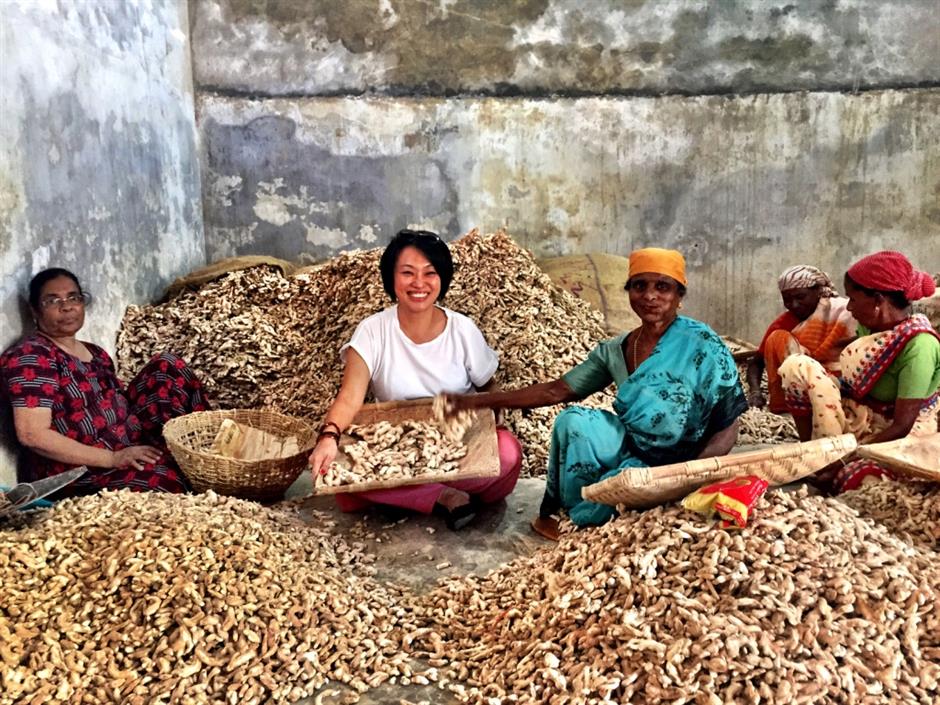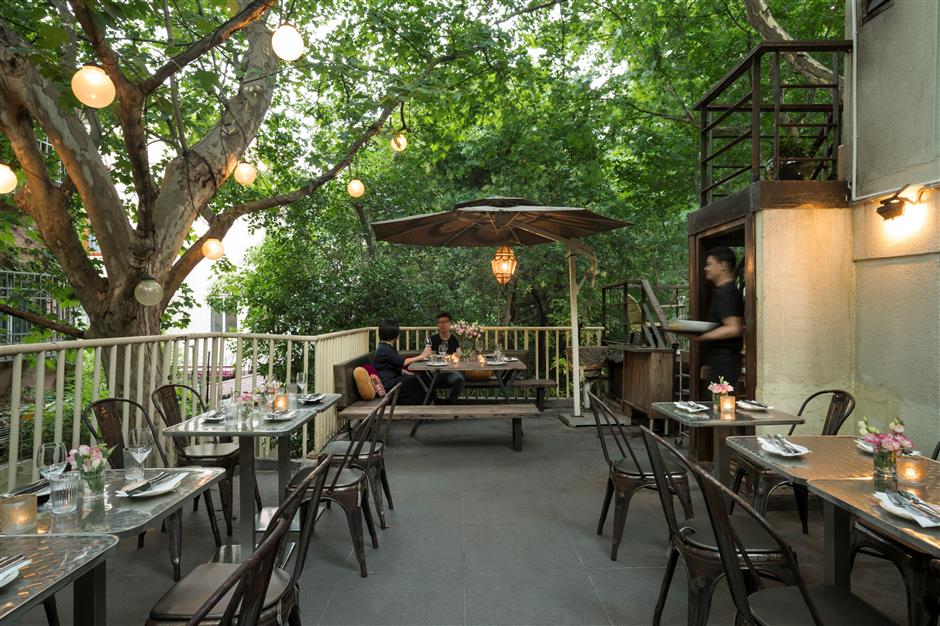Singapore chef's epiphany in a small Yunnan cafe
Singaporean restaurateur Betty Ng created Ginger in 2005 to serve modern Asian cuisine in Shanghai, but the story of ginger started much earlier in a different city.
Twenty years ago, Ng, who was living in Tokyo, traveled to Lijiang in China’s southwestern Yunnan Province — she used to visit China at least once a year — and back then the city wasn’t so touristy.
At night, there was nowhere to eat besides the hotel restaurants, so Ng started to look around the neighborhood.
She stumbled across a cozy little place and saw people eating. She asked if it was still open but was told the shop only served tea and coffee. The food was the staff meal.
“I said to the owner: ‘You have such a beautiful place but you don’t sell food, it’s such a pity!’” Ng said.
“The young lady told me that she didn’t know how to cook, so I told her that I would return the next day: ‘Let’s go to the market and I’ll teach you some dishes you can easily prepare and sell here.’”
Ng took the young lady to the market and bought meat, mushrooms, celery, beans and so on, then shared some simple recipes like Hungarian Goulash, mushroom soup and mushroom spaghetti, all of which could be made with fresh local ingredients.
Ng tried her first ginger tea at that small shop, and it’s the same ginger tea she offers in Ginger today.
“I selected the name Ginger for our restaurants because I love ginger and my Lijiang experience will always have a place in my heart,” she said.
Ng returned to Japan after her vacation and the pair remained in touch for a few years before eventually losing contact, but the shop owner did turn the place into a real cafe.
Ng originally worked in hospitality in Singapore. In 1987, she moved to Beijing for one-and-half years, relocated to Hong Kong and later returned to Beijing for another four years.
But it was in Tokyo where Ng gradually changed her career path toward culinary arts.
Ng, who first focused on learning Japanese after arriving, has always worked hard because work makes her feel good.
So she decided to teach Singaporean cooking to the Japanese.
“When I was teaching, I realized that I wanted to upgrade my skills because I was just a home cook, so I decided to study French cuisine because my husband is German and it would be nice to be able to cook Western food properly,” she said.
After studying cuisine and patisserie at Le Cordon Bleu Tokyo for more than two years, she graduated with a Grand Diploma in 2000. During her 10 years in Japan, she continuously studied Japanese cuisine.
“In Japan, I consulted for restaurants and at the same time helped many leading magazines in food and table styling as well as publishing my recipes and interior coordinating, which are very popular in Japan even today,” she said.
“Japanese are obsessed with the original. There were few skilled Singaporean chefs in Japan at that time. Ethnic food fusion was all the rage and that is where I came in.”

Betty Ng (second left) in a ginger warehouse in Kochi, Kerala in India.
When Ng moved to Shanghai in 2003, she decided to finally take the leap and open a cafe.
She needed a showcase of her work for people to better understand what she did with table styling and recipe making, which have become popular here in the past decade.
As a foreigner living in China, Ng had to learn restaurant operations the hard way.
“I didn’t have anyone to turn to, I couldn’t ask other restaurants what to do, there was no WeChat but only phone and SMS, so it was very hard to ask people where to buy ingredients,” she said.
“There wasn’t information sharing at that time. We started to source things ourselves. I remember eating in other restaurants and asked the staff there if they could share the information of drink suppliers...”
Slowly, Ng gathered the information she needed.
In September 2005, Ng opened the first Ginger on Fuxing Road W. near Huashan Road, a cafe serving international cuisine.
She expanded her brand to Xintiandi. Ginger was also among the early businesses to open in Tianzifang and Sinan Road, trendy destinations in the city.
“We were very successful in the beginning because Ginger served healthy international food, so we had a lot of foreigners coming to us who were looking for food without MSG, and we were very careful with the oils we used,” said Ng.
In the absence of social media, Ginger Cafe became more and more popular through word of mouth.

Ginger Modern Asian Bistro serves healthy dishes inspired by various Asian cuisines.

The “Everything Ginger” dessert with ginger ice cream, ginger cake and ginger candy.
The business during daytime was good, but Ng tried different ways to attract nighttime customers, including a tapas and wine menu.
“At that time, it was too early for tapas. So in hindsight, when you do something, it must be the right place at the right time,” she said.
“Ginger made really nice Spanish tapas based on our international concept, yet customer acceptance was slow. Even though we anticipated the development correctly, we were too early.”
The Sinan Road store first served Vietnamese cuisine, then it was changed to a Japanese izakaya because Ng has a love for its fun and casual dining after her years in Japan. But again she was too early for the market.
Izakaya may be very trendy in Shanghai today, the idea wasn’t so well-known a decade ago, and the business didn’t take off.
After that, Ng decided to reconsolidate and have only one Ginger and narrow the cooking to Ginger’s competence in Asian cuisines, with some Middle Eastern-influenced items on the menu like the Moroccan chicken Tagine and Egyptian Dukkah spiced lamb.
When it first opened, 90 percent of Ginger’s customers were foreigners. Now half are Chinese as local diners increasingly open up to different concepts and international cuisine.
“I’m very happy to see a lot of Chinese customers who come to try different foods,” she said. “They are traveling and getting very affluent, so tastes and lifestyles change. It’s a very good development.
“Customers have become more aware of themselves, they are more particular about the food they are served and are asking questions. That’s a very good thing.”
Restaurateurs today face tougher competition, she says.
“The competition is enormous, there are also Chinese people who actually came out to create new concepts and they are doing a very good job, truly.
“I’m very happy to see the dining scene no longer dominated by foreigners.”
Ng loves to travel, which not only inspired her to create Ginger, but also introduce new flavors to her menu.
For example, when she travels to foreign countries, be it Morocco, India, Kyrgyzstan, Iran or elsewhere, she learns cooking from local chefs to fine tune Ginger’s cuisine.
“Going forward, I want to travel to the far corners of China and specifically to look for indigenous food,” Ng said.
“I want to study the Chinese regional cuisine concepts so I’ve started to travel around and eat.”

Betty Ng learns cooking in Marrakech, Morocco.















